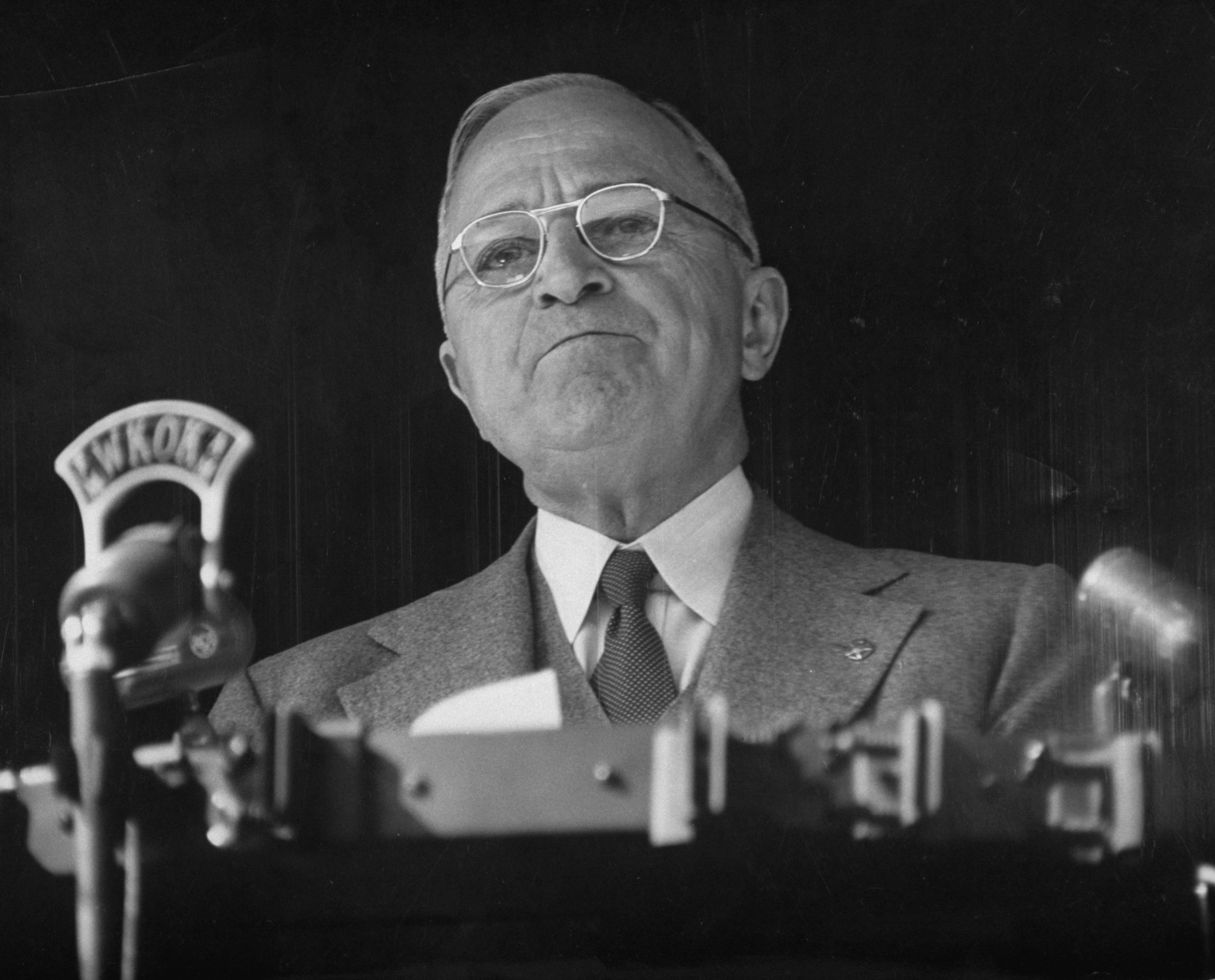
During his first Citizenship Day speech on Sept. 17, 1952, President Truman warmly greeted the immigrants attending the annual meeting of the National Conference on Citizenship in Washington, D.C. Later that day, they would take the Oath of Allegiance at a naturalization ceremony, shedding their status as immigrants to become U.S. citizens. In commemoration of this momentous event, Truman articulated a bold view of American citizenship, one that relinquished nationalistic animosities and racial prejudices and embraced the principles of “tolerance, friendship and equality.” “We welcome you,” Truman declared, “not to a narrow nationalism but to a great community based on a set of universal ideals.”
Truman’s cosmopolitan vision of U.S. citizenship would not have surprised his contemporaries. Throughout his presidency, he took strong stands on the issues of civil rights and, later, immigrant rights. Although Truman opposed “social mixing” between racial groups, he nevertheless ordered the desegregation of the military and signed an executive order that prohibited discrimination in the federal workplace. When conservative Southern Democrats blocked his farsighted initiatives in Congress, Truman launched investigations that raised public awareness of the severe exploitation endured by domestic and immigrant farmworkers and the urgent need for civil rights legislation that would protect the rights and even lives of African Americans.
Yet Truman’s immigration policies also reflected his desire for pursuit of reform, and came at a moment when his stance on the matter faced great opposition on Capitol Hill. More than half a century later, his words on that holiday serve as a reminder that as long as Americans have been celebrating citizenship, they’ve also been debating what it is.
In the months leading up to that Citizenship Day speech, Truman fought alongside liberal legislators in Congress to create a permanent system of refugee admissions, and to mitigate the racially discriminatory features of the nation’s immigration laws, particularly the national origins quota system—which limited the admission of southern and eastern European immigrants—and the regulations that barred the entry of Asian immigrants. Truman and his allies defended these measures not only as a matter of principle but also Cold War political strategy. In its effort to win the loyalties of communist and incipient communist states, the United States could not claim to be the global defender of individual rights when its own immigration laws mandated “unequal treatment based on race.”
Get your history fix in one place: sign up for the weekly TIME History newsletter
Yet, Southern Democrats once again blocked Truman’s policy proposals. Such reforms, according to Rep. John Rankin of Mississippi, threatened to “destroy the white race” and discriminated against “White Gentiles.” In other words, for many white Southerners, immigration restriction was as essential as Jim Crow to maintaining white supremacy. After overriding Truman’s veto, on June 27, 1952, Congress passed the McCarran-Walter Act, a law that would largely preserve a race-based approach to selecting immigrants.
In the aftermath of this defeat, Truman commissioned a study of the nation’s immigration system. Published in 1953, the final report, Whom Shall We Welcome, described the many contributions of the nation’s immigrants to American society and called for an overhaul of the immigration laws. By the 1960s, its conclusions would serve as a roadmap for the Kennedy and Johnson administrations, and for the passage of the Immigration and Nationality Act of 1965, which prohibited discrimination on the basis of race, sex and nationality in admitting immigrants.
In the interim, Citizenship Day served as a coda to Truman’s immigration reform campaign. Though largely symbolic, the holiday must have provided consolation for Truman in the wake of his legislative defeat. It represented a rare moment of consensus between Congress and the President—on Feb. 29, 1952, Truman signed the Joint Resolution, unanimously passed by the House and the Senate, that created Citizenship Day. It also captured the spirit of his cosmopolitan outlook on immigration and citizenship. Seeking to moderate the imperialistic overtones of its predecessor, “I Am an American Day”, the creators of Citizenship Day intentionally struck the word “American” from the name of the new holiday, in a concession to neighbors in the Western Hemisphere who rejected the idea that to be “American” was to be a U.S. citizen.
Like many of Truman’s policies on civil rights and immigration, Citizenship Day departed from past precedents. While sharply attacked in their own time, Truman’s ideas supplied the rhetorical and political foundations for the civil rights movements of the 1960s and the fundamental reform of the nation’s immigration and refugee laws.
On this Citizenship Day, when the rights of immigrants and citizens are once again at the center of debate in Washington and throughout the United States, it is important to recollect the origins of this holiday—not just the President’s words, but also the embattled context in which they were spoken, and the evolution that came later. As Truman explained in his own Citizenship Day speech, it was conceived as a day when the nation would come together to celebrate “tolerance, friendship, and equality . . . [for] these are the ideals to which this Nation of immigrants dedicated itself 165 years ago when our Constitution was signed.”
Historians’ perspectives on how the past informs the present
S. Deborah Kang is an associate professor at California State University San Marcos and the author of The INS on the Line: Making Immigration Law on the US-Mexico Border, 1917-1954.
More Must-Reads From TIME
- The 100 Most Influential People of 2024
- Coco Gauff Is Playing for Herself Now
- Scenes From Pro-Palestinian Encampments Across U.S. Universities
- 6 Compliments That Land Every Time
- If You're Dating Right Now , You're Brave: Column
- The AI That Could Heal a Divided Internet
- Fallout Is a Brilliant Model for the Future of Video Game Adaptations
- Want Weekly Recs on What to Watch, Read, and More? Sign Up for Worth Your Time
Contact us at letters@time.com